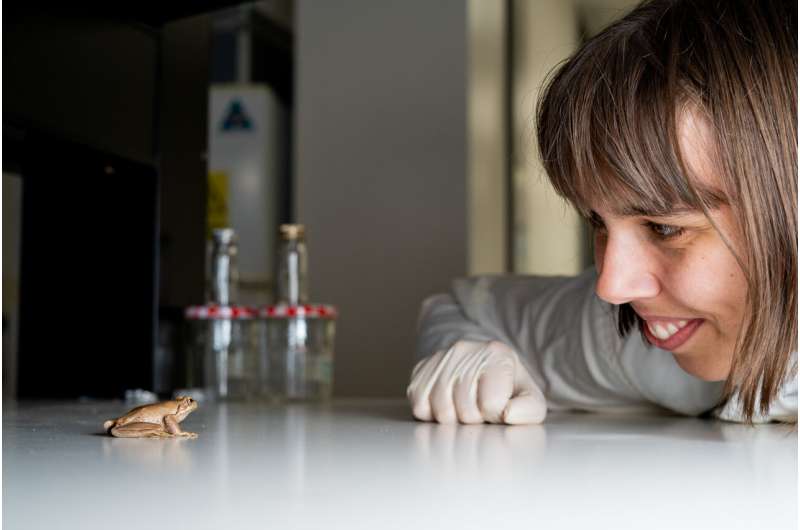This article has been reviewed according to Science X's editorial process and policies. Editors have highlighted the following attributes while ensuring the content's credibility:
fact-checked
trusted source
proofread
New method to thaw frozen frog sperm produces better swimmers

Scientists have uncovered a superior method of freezing and thawing frog sperm leading to improved sperm quality. Driven by mass declines of frogs worldwide, research into cryopreservation of amphibian sperm has expanded for the purposes of conservation.
The finding drastically alters scientific understanding of amphibian sperm cryobiology and has significant implications for the application of sperm cryopreservation to the management of genetic diversity within both captive and wild populations of threatened frogs worldwide.
Led by University of Newcastle reproductive biologist, Dr. Rose Upton, the study finds using less sucrose—or sugar—in the freezing process facilitates much higher cell recovery resulting in more intact membranes and sperm motility to produce better swimmers. The research has been published in the journal Reproduction.
Sperm was tested from six frog species, and in all cases the new preferred thawing method was found to be superior to the traditional cryopreservation method.
More information: Rose Upton et al, Paradigm shift in frog sperm cryopreservation: reduced role for non-penetrating cryoprotectants, Reproduction (2023). DOI: 10.1530/REP-22-0486
Provided by Newcastle University



















